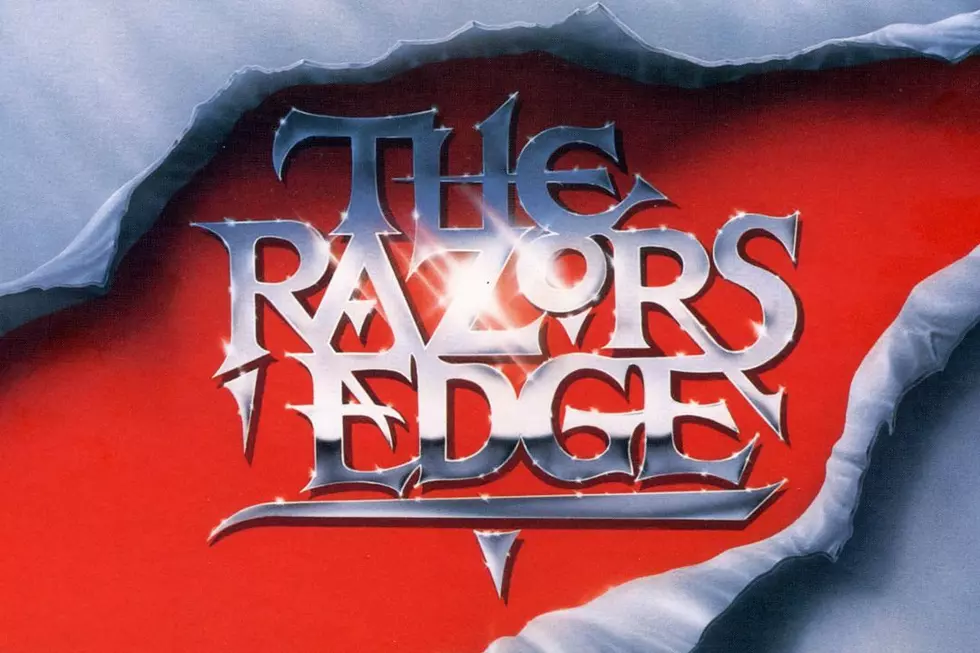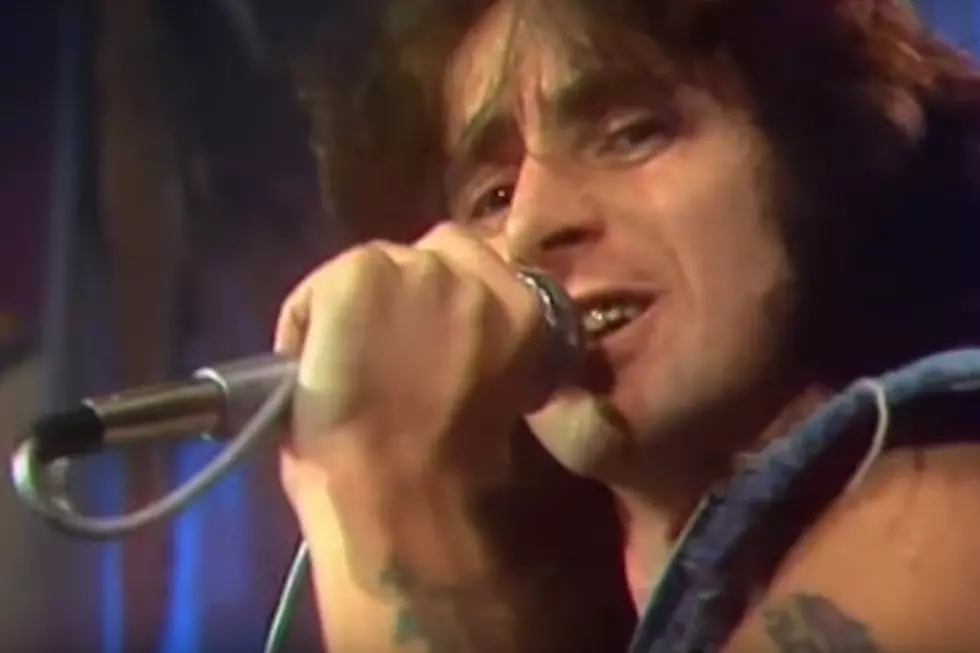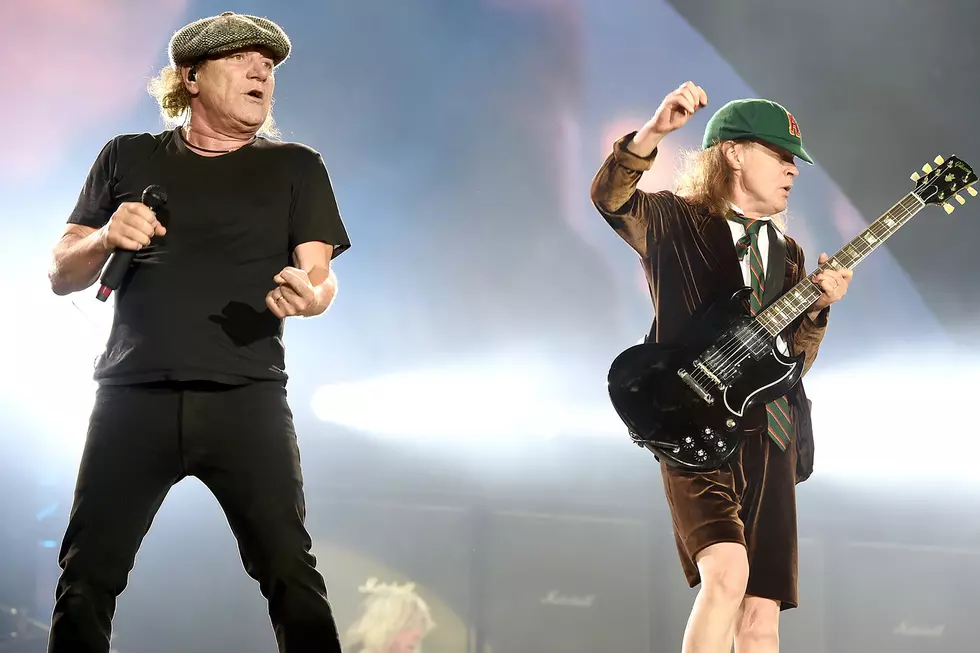
How the Young Brothers Regrouped for AC/DC’s ‘The Razors Edge’
AC/DC hit something of a rough patch in the '80s with its Flick of the Switch and Fly on the Wall LPs, but things started turning around for them with 1988's Blow Up Your Video. They kept the comeback going with their next project, 1990's The Razors Edge.
Still, the road to the band's 11th international album – released on Sept. 24, 1990 – wasn't entirely a smooth one. Before they'd even started thinking about a follow-up to Blow Up Your Video, co-founding guitarist Malcolm Young bowed out of the tour, checking into rehab to sort out a long alcohol dependency. Nephew Stevie Young, who'd later return to the lineup after health issues forced Malcolm's retirement, subbed in.
"I could feel things were going downhill for me," Malcolm admitted in a 1990 interview with Q. "I was losing my enthusiasm for everything, the group, life in general. It was just the drink, dragging me down. I had to pack it in."
Next out the door was drummer Simon Wright, who'd joined after Phil Rudd was fired in 1983. Wright quit in order to join Dio for the recording of their Lock Up the Wolves LP, and was replaced by session vet Chris Slade. There was still more upheaval on the way, as singer Brian Johnson had to take a temporary leave of absence to deal with his divorce.
This put an added burden on Malcolm and Angus Young when it came to songwriting, as Johnson had been responsible for lyrics since joining the band in the wake of Bon Scott's sudden death.
Handed complete control of AC/DC's creative reins, the Youngs seized them with gusto. "Instead of being riffmakers all the time and thinking we could make tunes out of them," Angus explained in a 1990 interview with the Auckland Star, "we started from the other end of the scale and concentrated on coming up with full songs."
All the changes leading into the album might have already marked enough of a difference to set The Razors Edge apart from the rest of the band's catalog, but another big one was around the corner: Angus and Malcolm's brother George, who'd produced their earlier albums and had returned to helm Blow Up Your Video, was forced to step away from the project due to personal issues.
On the advice of former Gentle Giant singer Derek Shulman, the band opted to hire Bruce Fairbairn — whose recent credits included Bon Jovi's Slippery When Wet and New Jersey — to replace George and his partner, Harry Vanda.
Moving the sessions from Ireland to Canada, Fairbairn offered the band a jolt of fresh creative energy. "When I sit on that side of the world, I always think producers are going to be high-powered, y'know, more business than pleasure," explained Angus. "But Bruce was really good. I was shocked in a way because the guy said, 'I want you to sound like AC/DC when you were 17.'"
Watch AC/DC's 'Thunderstruck' Video
Still, if things were far from business as usual behind the scenes, the Youngs weren't about to reinvent themselves musically. The same instincts that had made Fairbairn a great fit for Bon Jovi and Aerosmith helped him turn The Razors Edge a tighter, more polished record than it might have been in a different producer's hands, but at bottom, it was still identifiably AC/DC — which is exactly the way the band wanted it.
"With AC/DC, we've always started with rock, and we've just kept it going. The critic's view is always, 'They just made an album and it's the same as the last one,'" Angus shrugged to Guitar World in 1991. "I'll have 15 of them, anytime."
Of course, no producer could have made much of a difference if the Youngs hadn't been able to come up with worthwhile material for The Razors Edge. Happily, that was far from the case: Angus and Malcolm's songs-first focus could be felt from the opening moments of the album's leadoff track and first single, "Thunderstruck," built around a blistering Angus riff so heavy that it carries the first minute of the song virtually unassisted.
"'Thunderstruck' was one of those songs that just fell into place very easily," recalled mixing engineer Mike Fraser in Jesse Fink's book The Youngs: The Brothers Who Built AC/DC. "Angus’s picking part makes that song build like no other. I remember being so pumped up while recording his parts that we were just about as sweaty as he was.
"It’s magic. It’s got this great sort of build," Fraser added. "It’s almost like it’s holding back, holding back, the whole way, but you know it’s going to pay off. It just gets you going right away, pumped up. It whips you into a frenzy. It doesn’t pay off too early and the whole song is just this build. It’s awesome."
Fueled by the Top Five success of "Thunderstruck" at Mainstream Rock stations, The Razors Edge gave AC/DC their biggest hit in years, peaking at No. 2 on the American charts and selling more than five million copies in the U.S. alone — the best sales figures they'd seen since Back in Black a decade before. Their renewed chart presence even spilled over onto the pop charts, where the album's second single, "Moneytalks," made it all the way to No. 23.
With the wind finally fully at their backs again, the band booked a major world tour, with dates that started in the fall of 1990 and lasted clear through to mid-November 1991. Those dates would be commemorated with the simply titled AC/DC Live, issued in October 1992, which added another three million units to the group's impressive early '90s sales tally.
After spending the mid-to-late '80s seemingly in search of a way to remain relevant in a changing musical landscape, they were definitively back on top of their game — and they'd gotten there by defiantly sticking with the type of rock 'n' roll they'd always made best.
"Everyone's the same," Angus laughed to the Auckland Star. "We're keeping our pecker up and getting laid at the end of the day – if you're lucky!"
The Hilariously Bad First Concerts of Rock's Biggest Bands
The Only Time AC/DC Was Late for a Show
More From Ultimate Classic Rock









